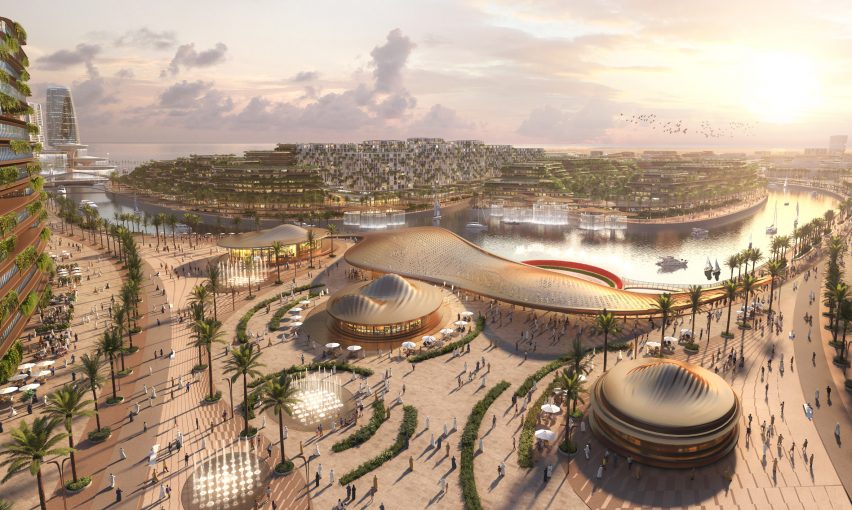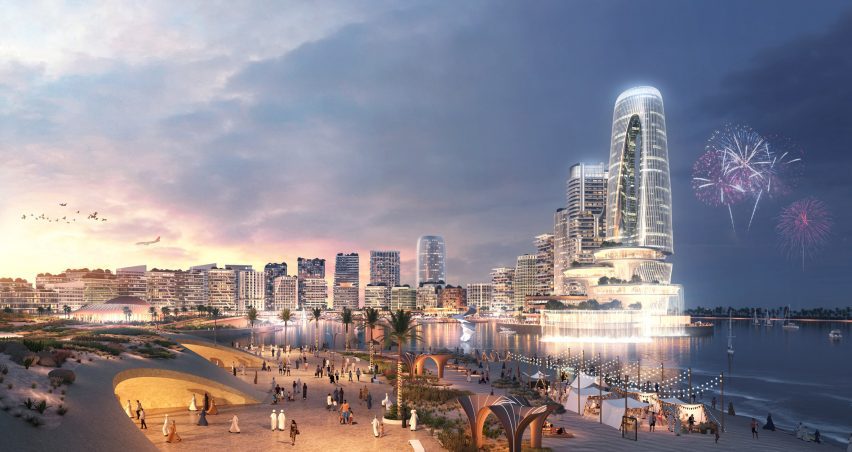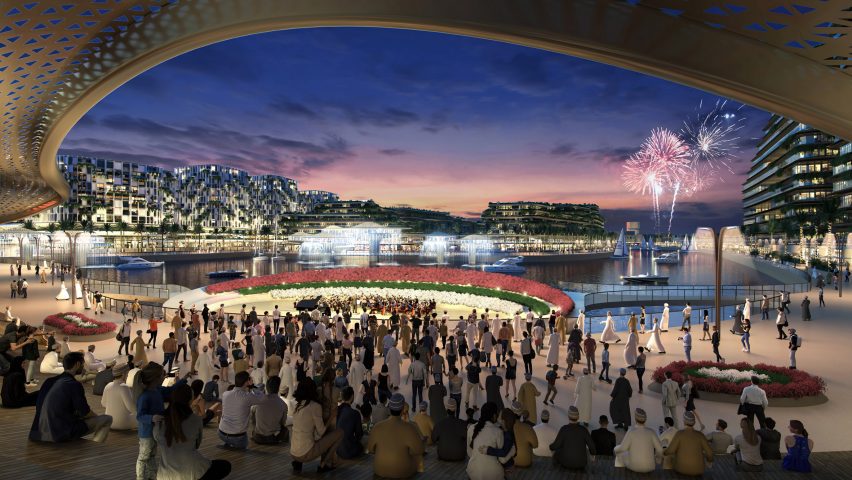
British architecture studio Zaha Hadid Architects is set to create a waterfront development in Muscat, Oman, that will include canal walkways and have a design “emphasising climate resilience”.
Set to be built in downtown Muscat, the 3.3 million-square-metre development will feature a marina, a cultural district, canal walkways and a recreational waterfront.
The project, which was revealed by Oman’s Ministry of Housing and Urban Planning (MoHUP), will also house a ministry campus. This will hold residences as well as commercial, arts, leisure and culture spaces.

Informed by local culture and nature, the Al Khuwair development aims to “redefine urban living in Oman” and will have an expected population of 64,500 people.
“The masterplan’s geometries echo the bays and coves of Oman’s coastline along the Arabian Sea,” project director Paolo Zilli told Dezeen. “With the marina at its heart, the design continues Muscat’s rich tradition as a historic port city.”
Zaha Hadid Architects worked with engineering studio Buro Happold on a materials strategy for the project, which was described as a having a “sustainability-led design emphasising climate resilience”.
This strategy will include interventions specially designed to help with climate and coastal resilience, such as stormwater management and breakwaters.

Zaha Hadid Architects will also upgrade buildings on the ministry campus through a “programme of refurbishments,” the studio said.
“The site is currently an administrative and industrial area of the city,” Zilli explained. “Many existing buildings will be retrofitted, refurbished and improved in the future years.
As well as conserving and restoring native plant species, the Al Khuwair development is targeting a biodiversity net gain of 10 per cent.
It will have a passive design strategy to reduce water use and limit energy demand for its buildings and landscaping, and be powered by renewable energy, including solar energy.
The compact development will prioritise pedestrian activity and public transport using water taxis, light rail transit and bus rapid transit.
To minimise private vehicle use, the Al Khuwair development will also have cycle infrastructure, as well as passive shading and cooling to encourage walking.

Construction on the project is set to begin at the end of this year.
The development is part of Oman’s Vision 2040, which aims to “achieve a developed, diversified, and sustainable national economy with fair distribution of development gains and protection of natural resources.”
“This visionary project will bring us another step closer to realising the Oman Vision 2040 and delivering a sustainable and prosperous future for the people of Oman,” minister of housing and urban planning Khalfan Al Shueili said.
“It will help shape the future of both Muscat and Oman more broadly, creating a new destination to welcome visitors from across the globe to our capital city.”
Other projects that will form part of the vision 2040 include a mixed-use district in the Jaban Al Akhdar mountains and a city for 100,000 people that London studio Skidmore, Owings & Merrill is designing in Oman.
Source: https://www.dezeen.com